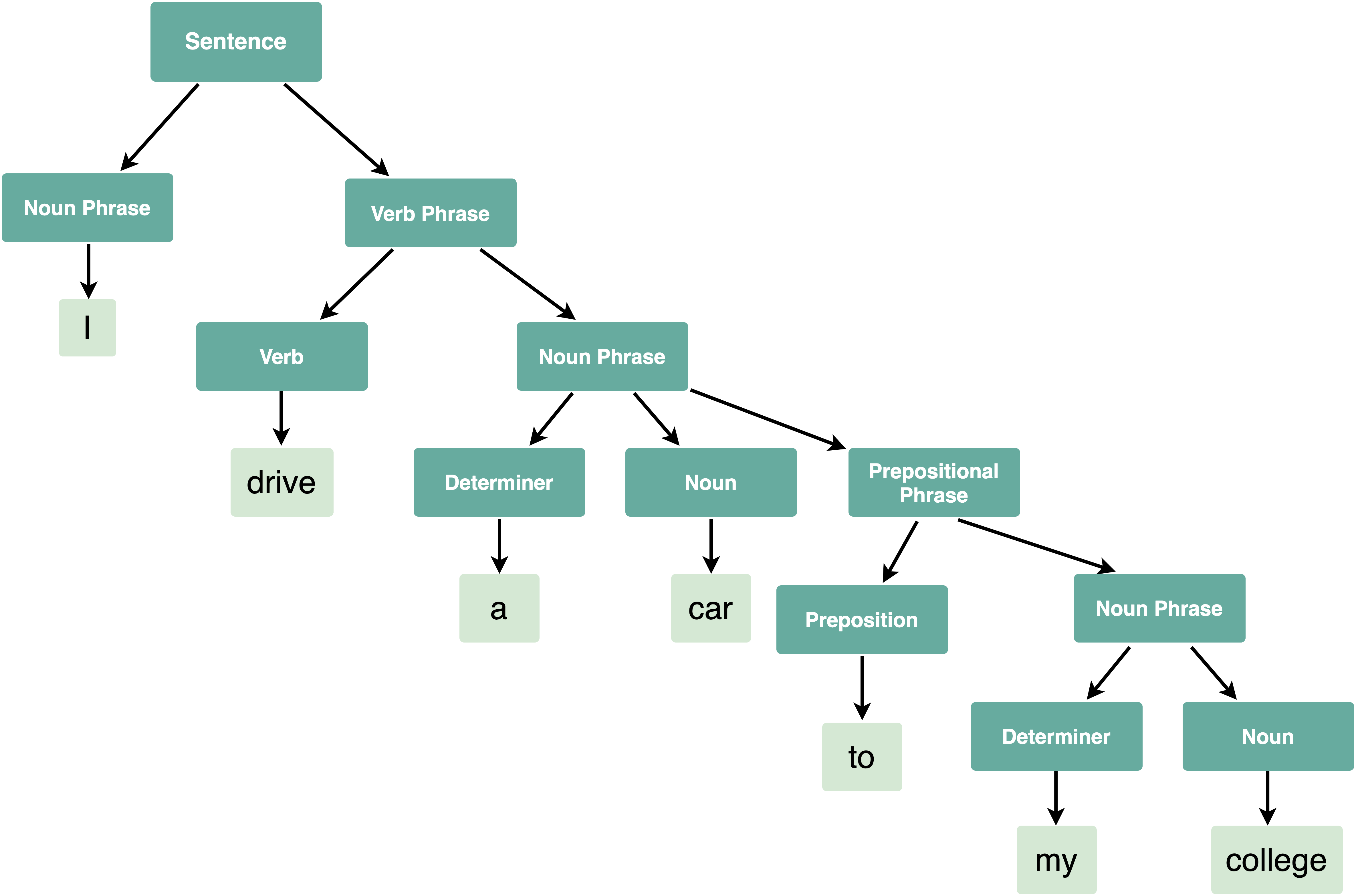Syntax Tree – Natural Language Processing
Last Updated :
12 Jul, 2021
Natural Language Processing (NLP) is a field of study that deals with understanding, interpreting, and manipulating human spoken languages using computers.
Since most of the significant information is written down in natural languages such as English, French, German, etc. thus, NLP helps computers communicate with humans in their own languages and perform other language-related tasks.
In conclusion, NLP makes it possible for computers to read the text, hear speech, interpret and realize it, understand the sentiment, and identify important parts of a text or speech.
What is Syntax?
A natural language typically follows a hierarchical structure, and contains the following components:
- Sentences
- Clauses
- Phrases
- Words
Syntax refers to the set of rules, principles, processes that govern the structure of sentences in a natural language. One basic description of syntax is how different words such as Subject, Verbs, Nouns, Noun Phrases, etc. are sequenced in a sentence.
Some of the syntactic categories of a natural language are as follows:
- Sentence(S)
- Noun Phrase(NP)
- Determiner(Det)
- Verb Phrase(VP)
- Prepositional Phrase(PP)
- Verb(V)
- Noun(N)
Syntax Tree:
A Syntax tree or a parse tree is a tree representation of different syntactic categories of a sentence. It helps us to understand the syntactical structure of a sentence.
Example:
The syntax tree for the sentence given below is as follows:
I drive a car to my college.

Code: Syntax Tree in Python
Python3
import nltk
nltk.download('punkt')
nltk.download('averaged_perceptron_tagger')
from nltk import pos_tag, word_tokenize, RegexpParser
sample_text = "The quick brown fox jumps over the lazy dog"
tagged = pos_tag(word_tokenize(sample_text))
chunker = RegexpParser(
)
output = chunker.parse(tagged)
print("After Extracting\n", output)
|
Output:

Code: To draw the syntax free for the above sentence
Output:

Share your thoughts in the comments
Please Login to comment...